The Spanish metropolis of Barcelona is one of the finest cities in the entirety of Europe, and it is adorned with centuries worth of fascinating history, outstanding architecture, and rich culture like nowhere else in the world.
Seamlessly combining the old with the new, the buzz of city life with the calm of the coast, as well as incongruous architectural styles, ranging from the Gothic to the medieval, Barcelona is a charming and enchanting city that attracts a plethora of tourists every single year.
Yet, step outside the confines of the city, and discover the abundance of historic castles that lie on the edges of the hustle and bustle of the centre, that offers another side to Barcelona. This list will highlight the best castles in Barcelona, their key points of interest, as well as practical information, such as opening and closing times, and location.
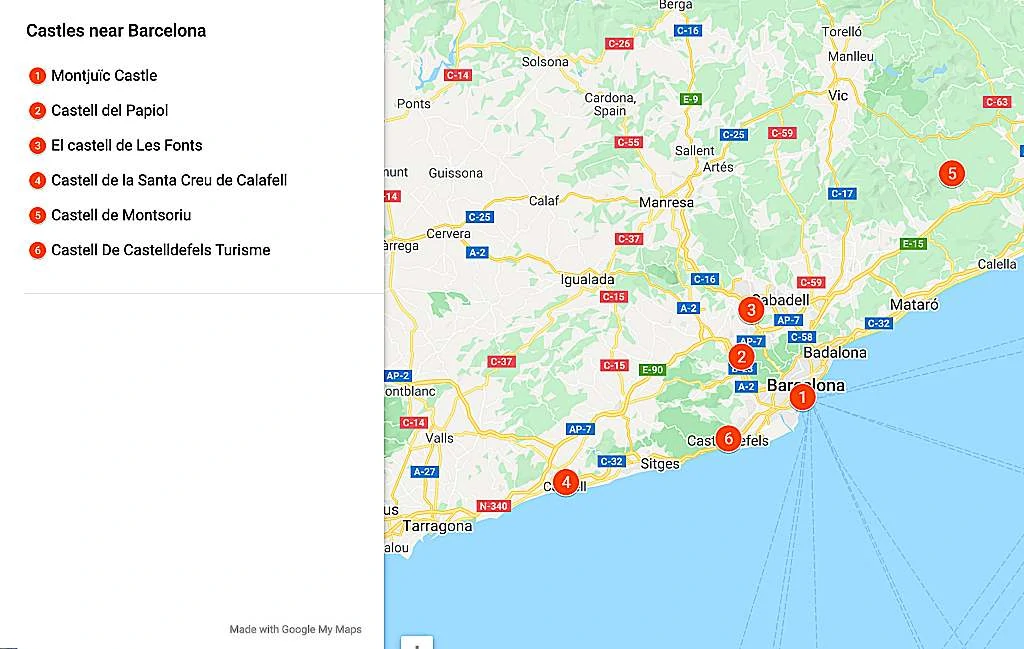
The 6 Best Castles to Visit Near Barcelona
1. Castell de Montjuïc

Perched upon the stunning Montjuic Hill in the city of Barcelona, lies the stunning Castell de Montjuic, or Montjuic Castle, which is a historic military fortress, that dates back to the year 1640.
The first battle at the site occurred in the year 1641, during the Catalan revolt; 26,000 men were called to put a stop to the revolt, by the decree of the King of Spain.
Later, in the year 1694, the castle was further fortified, where stronger and new bastions and battlements were added. The castle has a rich military history, and it has played a critical role in many famous historic battles and conflicts throughout the centuries.
Since the year 1963, the castle has changed its function to that of a military museum, and it is open to the public today, who enjoy the history of the castle, and the town that it is located which is beautiful and traditional.
Where: Montjuic Hill, Spain
When: 1640
Open for visit: Yes, check here for more information.
2. Castell del Papiol

Castell del Papiol, or otherwise known as Papiol Castle, is a medieval castle that is located in the city of Barcelona in Spain. The oldest documents attached to the castle, and its first historic mention, date back to the year 1115, where Ramon Berenguer III, who was the Count of Barcelona, signed the transfer of the village of Papiol.
In the year 1448, a large earthquake occurred in the area, and the castle was heavily damaged; it was later rebuilt, and further alterations were added, such as a higher façade, and larger windows added to the upper floors.
The castle has a very Romantic feel to it, as well as many Gothic features, that capture the imagination of a multitude of visitors every year. Today the castle is open to the public.
Where: Barcelona, Spain
When: 1115
Open for visit: Yes, check here for more information.
Check out: Famous castles to visit in Spain.
3. El castell de Les Fonts
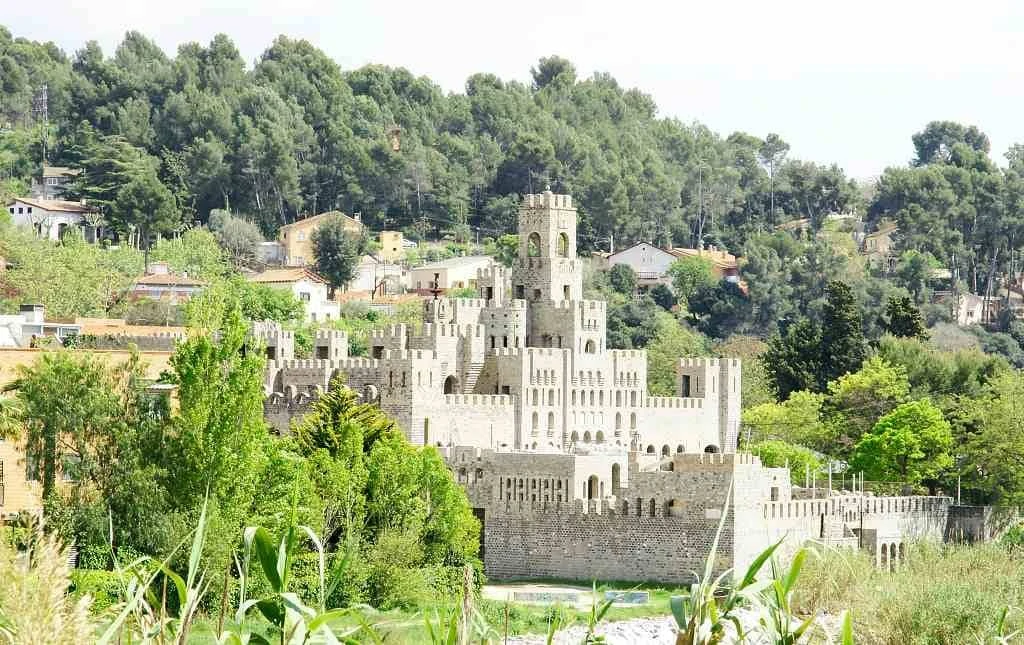
Located just a stone’s throw away from the hustle and bustle of central Barcelona lies the stunning El Castell de Les Fonts, which is situated in the Spanish town of Les Fonts.
Little is known about the castle, as it is a private residence and is not open to the general public, but it is nonetheless a stunning example of Catalonian architecture; it is believed to be approximately around 500 years old and was designed by Jacinto Garcia, who fascinatingly had no experience in architecture before undertaking the work on El Castell de Les Fonts.
The castle is adorned with stunning medieval decorations, such as busts, gargoyles and niches, as well as additional towers, turrets, and columns.
Where: Les Fonts, Spain
When: 16th century
Open for visit: Not open to the general public
4. Castell de la Santa Creu de Calafell
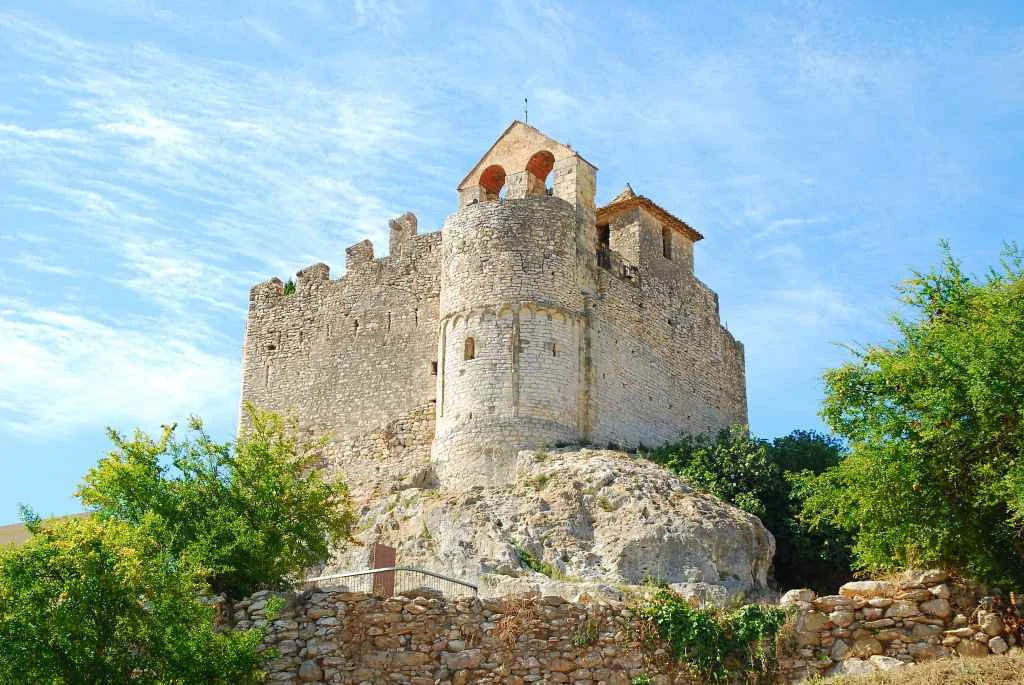
With stunning views across the gorgeous plains of Calafell, and perched upon a beautiful hill lies the stunning Castell de la Santa Creu de Calafell, which is a gorgeous and historic medieval castle that is believed to date back to the 12th century.
It was originally built during the reconquest and repopulation of the area against the Moors, and this original architecture is still partially in existence, which has captured the interests and imagination of many visitors annually.
Today, there are remains of the original medieval necropolis, as well as several tombs, which are carved into the surrounding rock. The castle has played a strong military role over the centuries in which it has flourished, and there are several notable cannon holes that are still visible in the walls.
Where: Calafell, Spain
When: 12th century
Open for visit: Yes, check here for more information.
5. Castell de Montsoriu
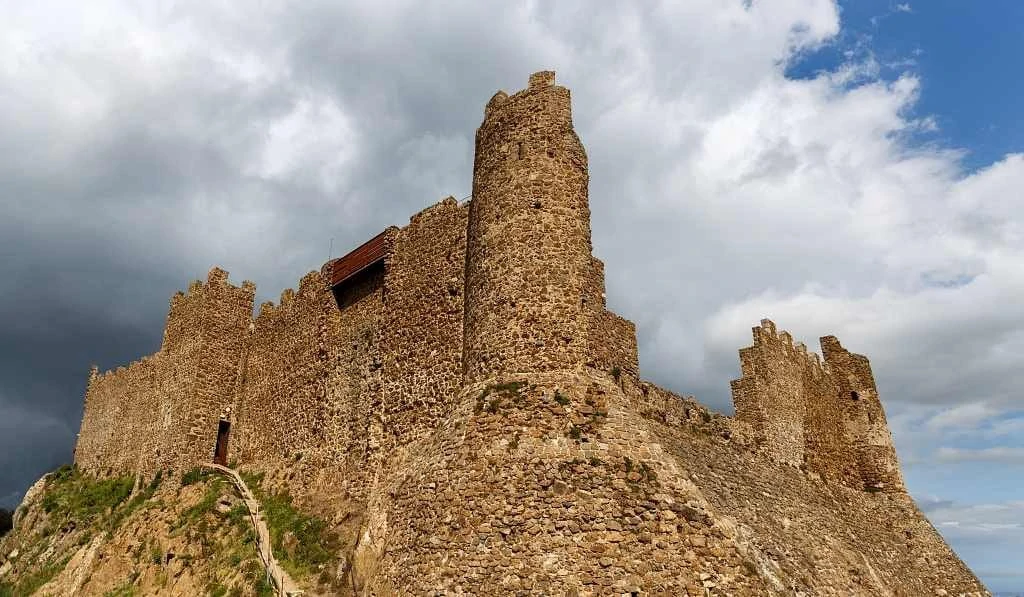
With a history spanning well over 1000 years, Spain’s Castell de Montsoriu is one of the country’s most historically rich and fascinating castles. The castle that stands today, albeit in a ruinous form, dates back to the 14th century, and it is initially served a defensive purpose, which is why it is built upon a large hill, which offers views across the entire valley.
Throughout the Middle Ages, the castle was in its prime, and it played a pinnacle role in military conflict and local society; however, like many castles in the region, it fell into disrepair and abandonment, and was not renovated again until the 1990s; it was restored to its former glory, and has been open to visitors since the year 2011.
Where: Montsoriu, Spain
When: 14th century
Open for visit: Yes, check here for more information.
6. Castell De Castelldefels
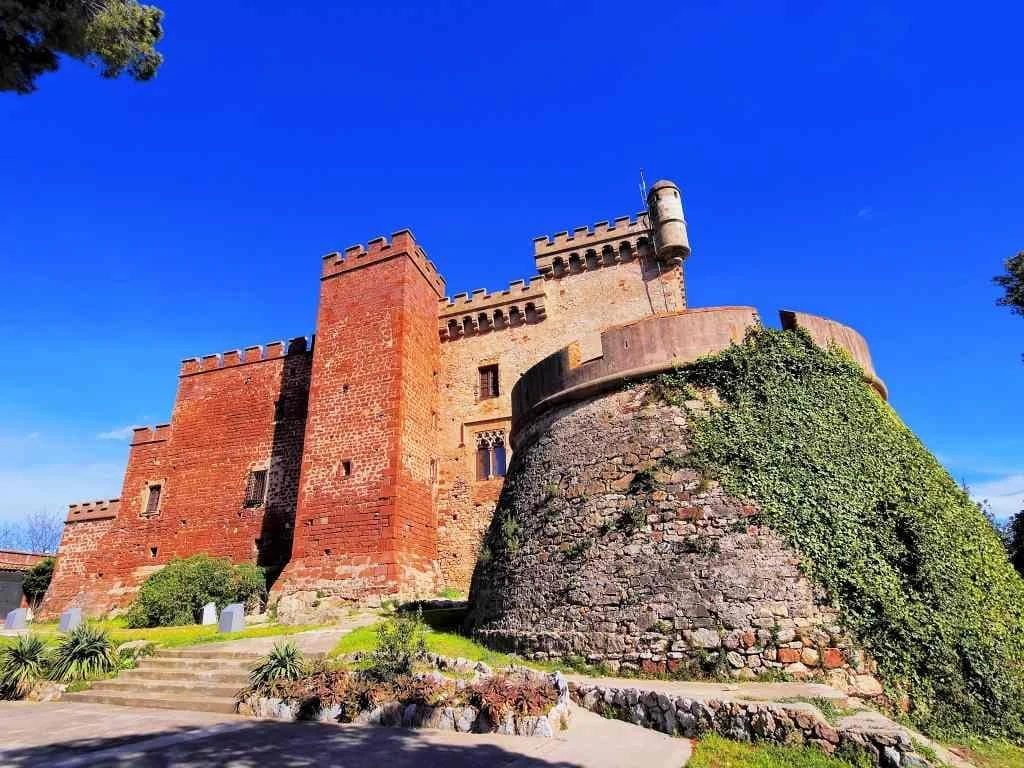
Located in the town of Castelldefels, which is near to the hustle and bustle of Barcelona, is the gorgeous Castell de Castelldefels Turisme; it was originally constructed with the purpose of defending the Carolingian Empire against Muslim territories.
The castle, and its site, has a history that dates back to the Roman era, where there is archaeological evidence to suggest that a Roman villa lay there in the 1st century, until the 6th century. T
hroughout the Middle Ages and the Renaissance era, new additions and renovations were added, depending on the needs of the time, such as Gothic and Romanesque features, and defensive structures. Today, the castle is a very popular tourist site for those wishing to branch out of the city, and see another side to Spanish culture.
Where: Castelldefels, Spain
When: 1st-century origins
Open for visit: Yes. Check here for more information.
